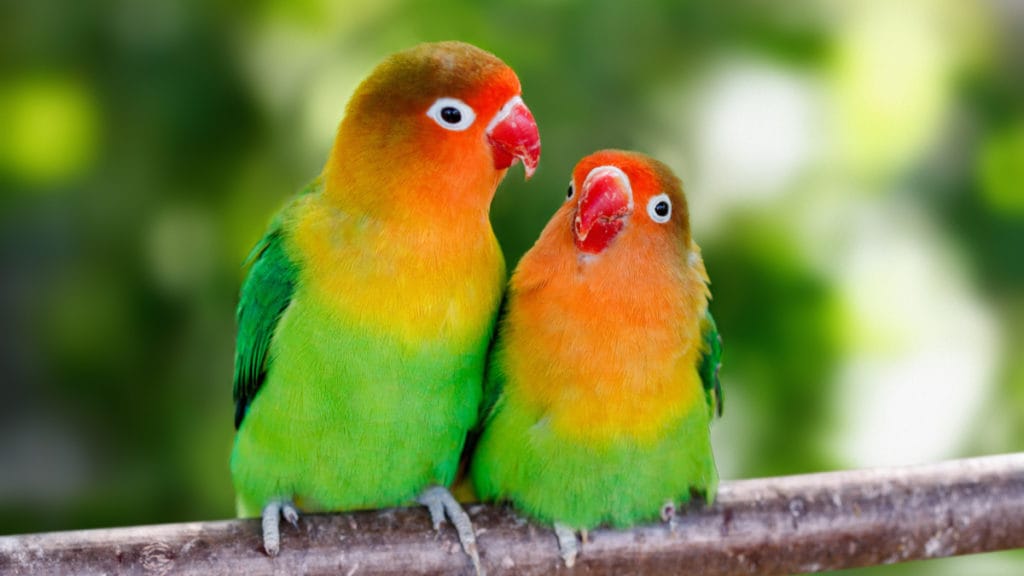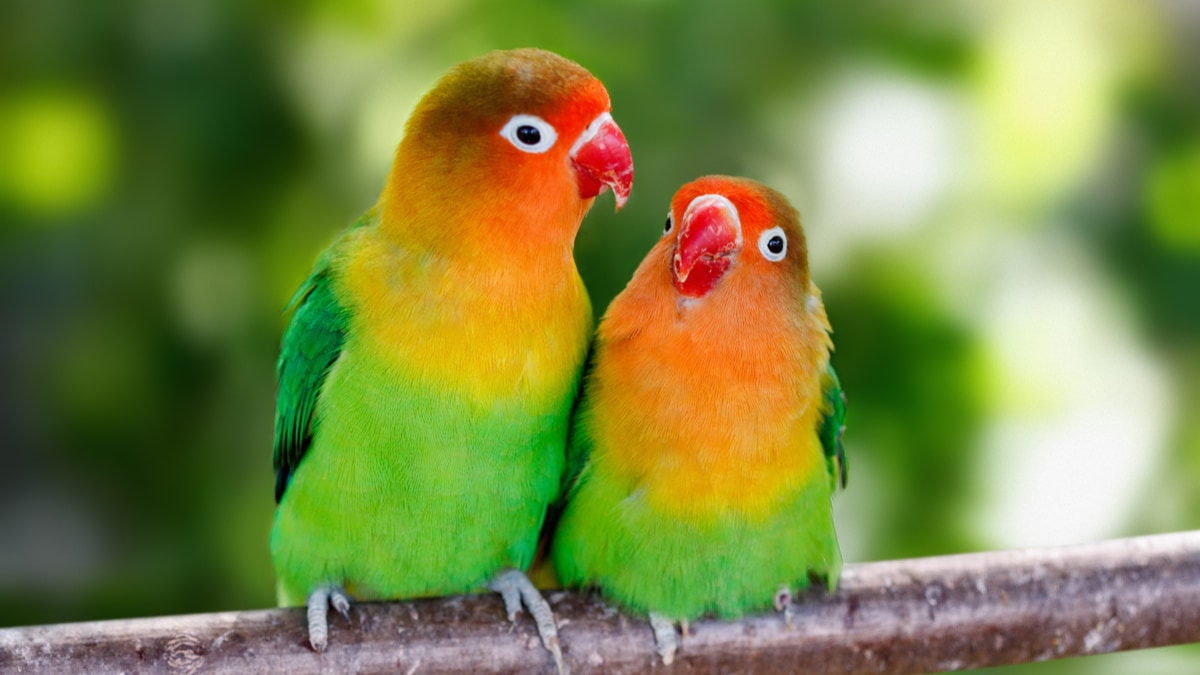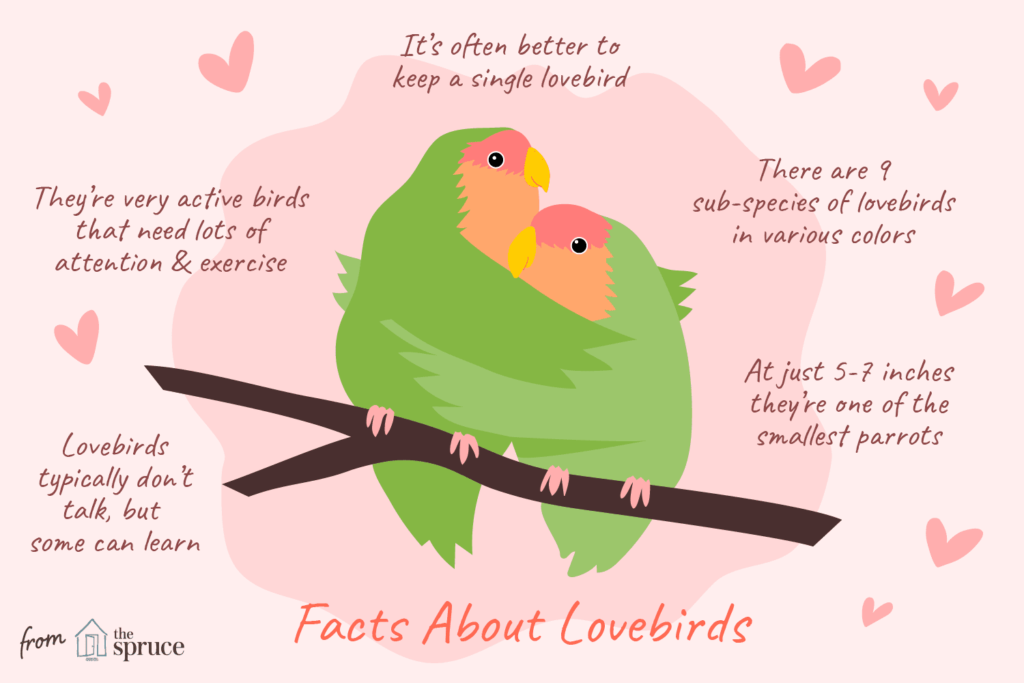Lovebirds do not necessarily need to be kept in pairs, but they often thrive with companionship. Solo lovebirds require more human interaction to remain content.
Lovebirds are sociable creatures, known for their affectionate nature and the strong bonds they form with mates. Named for their monogamous habits, they have cultivated a reputation for requiring a partner to flourish. While it’s true that a pair can provide mutual social stimulation, a single lovebird can lead a healthy, happy life with appropriate attention from its owner.
The key is to ensure that a solitary bird receives adequate engagement, including playtime and social interaction, to stave off loneliness and boredom. With a nurturing environment, both individual lovebirds and paired ones can showcase their vibrant personalities and remain emotionally and physically healthy. Providing toys, mental challenges, and regular interaction for single lovebirds can be essential in promoting their well-being.
The Bonding Of Lovebirds
Lovebirds radiate affection and are known for strong connections with their partners. These vibrant birds light up homes with their chirps and companionship. Exploring the depth of lovebird bonding reveals why a pair could be essential for their happiness.
Natural Flocking InstinctsNatural Flocking Instincts
Lovebirds thrive in groups, always seeking companionship. They are naturally social birds, originating from the regions where flocking is a way of life.
- Lovebirds in the wild stay close to their flock for safety and social interaction.
- Isolation can lead to boredom and stress in lovebirds.
- Physical and mental activities flourish when they are with a buddy.
Monogamous Behavior In The Wild
In their natural habitat, lovebirds pair up for life. These birds exemplify monogamy, often becoming inseparable from their chosen mate.
| Behavior | Benefit to Lovebirds |
|---|---|
| Bonding | Provides emotional security |
| Mutual preening | Strengthens relationship and trust |
| Nest building | Encourages cooperative partnership |
Witnessing these behaviors illustrates the importance of companionship in their lives. Having a mate enriches their daily experiences and ensures a joyful existence.

Credit: be.chewy.com
Psychological Well-being Of Solo Lovebirds
The Psychological Well-being of Solo Lovebirds is vital to consider for pet owners. These vibrant birds are known for their social nature. Understanding their need for companionship is instrumental in ensuring their health and happiness.
Risks Of Isolation
Solo lovebirds face multiple risks to their mental health when isolated. Without a partner to interact with, they can develop behaviors driven by stress. Isolation limits their natural need for socialization. This can adversely affect their psychological well-being.
- Increased aggression
- Feather plucking due to anxiety
- Stereotypic behaviors like repetitively pacing
- Lack of stimulation leading to depression
Signs Of Loneliness And Stress
Recognizing signs of loneliness and stress in a solo lovebird prompts timely interventions. Early detection helps mitigate long-term psychological effects.
| Sign | Description |
|---|---|
| Change in vocalization | Less chirping or mimicking |
| Lack of Appetite | Ignoring food or eating less |
| Sleep disturbances | Sleeping more or at odd times |
| Aggression | Snapping at objects or self |
A solitary lovebird may exhibit signs such as reduced interaction with owners. It’s critical to address these behaviors. Engaging in play, providing toys, and interaction can offer relief.
Success Stories Of Solo Lovebirds
Many might think lovebirds can only thrive in pairs, but solo lovebirds can also lead joyful and fulfilling lives. Stories abound of single lovebirds forming strong bonds with their human caretakers, blossoming in their individual attention. These success stories often highlight the remarkable adaptability and resilience of these charming birds when cared for with love and dedication.
Human Companionship As A Substitute
Human companionship can be incredibly rewarding for a lovebird living by itself. Solo lovebirds are known to develop deep connections with their humans, displaying affection and engaging in interactive play. Success stories often feature lovebirds learning to mimic words, whistling back and forth with their owners, or exhibiting excitement when their favorite person enters the room.
- The benefits include:
- Enhanced bonding due to focused attention
- Development of unique communication methods
- Reduced stress levels from continuous interaction
Activities To Stimulate A Single Lovebird
To ensure a single lovebird is happy and stimulated, a variety of activities can play a significant role. These activities keep their mind and body active, preventing feelings of loneliness or boredom.
| Activity | Benefits |
|---|---|
| Puzzles and Foraging Toys | Encourages natural behaviors, sharpens cognitive skills |
| Regular Training Sessions | Strengthens bond, provides mental stimulation |
| Music and Vocal Interaction | Promotes vocal expression, offers auditory engagement |
Ensuring these activities are part of a lovebird’s daily routine can enhance their overall well-being and mimic the stimulation they would receive in the wild or from a feathered companion.
Pairing Lovebirds: Practical Considerations
Wondering whether lovebirds need a buddy? Many bird lovers do. Lovebirds are known for their strong bonds. Yet, not all need a partner to thrive. Let’s dive into some practical considerations when pairing these feathered friends.
Compatibility Factors
Before pairing lovebirds, their compatibility matters. These birds form deep connections. A mismatch can lead to stress and fights. Here are strong pointers for a harmonious match:
- Age – Pair similar aged birds. Youngsters gel better.
- Personality – Observing each bird’s behavior helps. Calm birds often pair well.
- Health – Check both lovebirds to prevent disease spread.
- Species – Some lovebird species mix better than others.
Introducing Lovebirds To Each Other
Introducing new lovebirds takes patience. Here’s a simple plan:
- Separate Cages – Start with their homes close, but not too close.
- Shared Playtime – Allow joint activities in a neutral place.
- Observe – Watch their reactions. Are they curious or aggressive?
- Joint Cage – If they bond, shift to a shared space slowly.
Bonding time varies. Some take days; others need weeks or more.
Health Benefits Of A Paired Life
Lovebirds, with their vibrant hues and social nature, thrive when paired. The health benefits of a paired life cannot be understated. Not only do these sprightly birds provide companionship to each other, but they also gain significant advantages that enhance their overall well-being. Let’s explore the physical and emotional benefits of keeping lovebirds together.
Physical Health Advantages
Lovebirds living in pairs enjoy improved physical health. Here are key benefits:
- Exercise Encouragement: Partners motivate each other to stay active, leading to better circulation and muscle tone.
- Feather Care: They preen each other’s feathers, which helps prevent parasites and maintains their plumage.
- Stress Reduction: A paired bird exhibits fewer stress behaviors, contributing to a stronger immune system.
- Enhanced Nutrition: Observing each other eat can encourage a balanced diet and proper food intake.
Emotional Stability And Contentment
Alongside physical health, emotional well-being is crucial. Benefits lovebirds gain from a partner include:
- Constant Companionship: Together, they rarely feel lonely, leading to higher happiness levels.
- Behavioral Enrichment: Interactions with a mate provide mental stimulation, keeping their minds sharp.
- Bonding Activities: Shared activities like grooming and playing solidify their emotional connection.
- Security Feeling: Having a partner offers a sense of safety which promotes a calm and relaxed demeanor.

Credit: animals.howstuffworks.com
Creating A Conducive Environment For Pairs
Creating a Conducive Environment for Pairs is key to keeping lovebirds happy and healthy. Lovebirds are social creatures. They thrive in the company of a companion. A comfortable home ensures their well-being. Let’s dive into how best to set up a lovebird haven.
Cage Setup And Enrichment
Lovebirds need space to fly and play. For a pair, the cage should be large. At least 24 inches wide and 24 inches long. This gives them room to move and stretch their wings. Each lovebird requires personal space too. A well-arranged cage makes a big difference.
- Perches: Different sizes and textures keep feet healthy.
- Toys: Lovebirds enjoy puzzles and chewable items.
- Nesting area: Provide a cozy spot for them to rest.
Keep the cage clean. Replace food and water daily. Change the bedding often. A fresh environment prevents sickness.
Diet And Nutrition For A Lovebird Pair
Feeding lovebirds correctly is vital. Their diet affects their mood and health. Good nutrition consists of variety. Seeds shouldn’t be all they eat. Fruits, vegetables, and grains are essential too.
| Food Type | Examples | Frequency |
|---|---|---|
| Veggies | Carrots, spinach, peas | Daily |
| Fruits | Apple slices, banana, berries | 2-3 times a week |
| Proteins | Cooked eggs, legumes | Weekly |
Always provide fresh water. Lovebirds need it for drinking and bathing.
Avoid avocado and chocolate. They are toxic to birds. A balanced diet keeps lovebirds active and prevents obesity.
Breeding Concerns And Responsibilities
Lovebirds are known for their affectionate nature, often seen as inseparable feathered couples. Yet, deciding to breed them requires serious consideration. Responsible breeding goes beyond pairing; it entails a commitment to both the process and the care of the new life you helped create. Let’s dive into the intricacies involved.
The Breeding Process
Successful lovebird breeding starts with a comfortable environment. It’s essential to provide a spacious cage and a nesting box. Quality food, fresh water, and consistent light cycles also play crucial roles. Once a pair bonds, courtship behavior begins, followed by egg-laying. Females typically lay 4 to 6 eggs, which hatch after about 21-24 days.
Caring For The Offspring
When chicks hatch, parents need plenty of nutritious food to feed their young. Adequate supplies include:
- Seed mixes
- Pellets
- Vegetables
- Fruits
Ensuring the nest is clean is critical for the chicks’ health. Watch the babies grow, observing for any signs of distress. At around 6 to 8 weeks, they’ll be ready to leave the nest. At this stage, assist them in becoming independent by providing a separate cage and training them to eat on their own.

Credit: be.chewy.com
Adopting Lovebirds: Rescue And Adoption Options
Are you ready to open your heart and home to a feathered friend? Adopting lovebirds can be a rewarding experience. Explore rescue and adoption options to find your perfect pair of chirpy companions.
Finding Lovebirds In Need Of A Home
The journey starts with connecting to local avian rescues. Social media and pet adoption sites are also good resources. Places to check include:
- Bird shelters: Usually have a variety of birds for adoption.
- Avian veterinarians: They can connect you with owners looking to rehome birds.
- Online forums: Owners often post about birds needing new homes.
Visit adoption events and ask plenty of questions about the lovebirds’ backgrounds.
Considering The Long-term Commitment
Adopting lovebirds means a long-term responsibility. These birds have a lifespan of 10-15 years. Before adoption, think about:
| Consideration | Details |
|---|---|
| Space: | Lovebirds need room for a cage and to fly safely indoors. |
| Time: | Daily interaction is crucial for their happiness. |
| Budget: | Factor in the cost of food, toys, and vet visits. |
| Family: | Ensure everyone in the household agrees to a new pet. |
Choose a pair of lovebirds that fit well into your life. Commit to providing love and care for their entire lives.
Conclusion
Caring for lovebirds involves understanding their social needs. Keeping them in pairs often leads to happier, healthier birds. Solo lovebirds can thrive with enough interaction. Whether opting for a pair or a single pet, ensure their emotional well-being is prioritized.
Your feathered friends depend on it.
Ryan Everhart is a passionate bird enthusiast and blogger, primarily writing on his website, Avian Whispers. His journey into the world of bird blogging began with a deep interest in parrots, a species that captivated his attention for their intelligence and social behavior. Over time, his content expanded to cover a broader range of bird species, offering insights into bird behavior, care, habitats, and conservation.
Ryan is dedicated to educating his audience, which includes both new bird owners and seasoned enthusiasts. His writing is filled with personal experiences, expert knowledge, and practical advice on bird care. Through Avian Whispers, he aims to foster a deeper appreciation for birds, emphasizing their role in nature and the joys of having them as pets.
Starting with articles focused on parrots, Ryan’s work now encompasses a diverse range of topics such as feeding, training, habitat enrichment, and bird health. His love for birds extends beyond parrots, diving into various avian species. His informative and heartfelt writing reflects his commitment to the well-being of birds and the desire to help others connect with these creatures.
As a growing voice in the bird blogging community, Ryan strives to provide a platform where bird lovers can learn, share experiences, and connect over a shared passion for avian life. His blogs are not only educational but also serve as a reminder of the importance of protecting and nurturing the bond between humans and birds.




